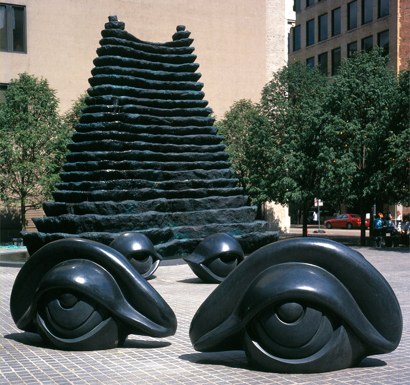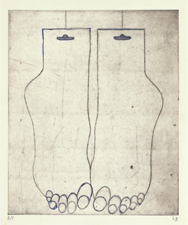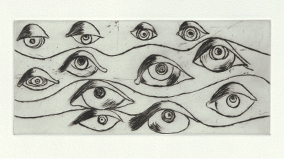





Body Parts

Untitled, no. 1 of 36, from the series, The Fragile
2007

Ear
2004
In the 1940s, Louise Bourgeois began an investigation of the partial female nude in a series of paintings, all titled Femme Maison (Woman House), in which houses substitute for heads. These images became feminist icons and subsequently turned up in her sculpture. Later, Bourgeois’s marble works of the 1960s and 1970s were filled with forms resembling breasts, penises, and undulating landscapes, all simultaneously. “Our own body could be considered from a topographical point of view,” she said, “a land with mounds and valleys, and caves and holes.” Latex proved a supple material in which to cast such shapes, culminating in the notorious Fillette (Little Girl), an unmistakable penis, nearly two feet high, hung by a hook from the ceiling.
In the 1970s, Bourgeois exhibited The Destruction of the Father, a claustrophobic, room-size lair crammed with bulbous, erotically charged latex protuberances and scattered animal limbs. She followed up with Confrontation, a stage-like setting accompanied by a performance titled A Banquet/A Fashion Show of Body Parts. She later shifted from merely suggesting body parts to creating more realistic depictions. Her sculptures, drawings, and prints of eyes, ears, hands, and lips all accentuate the functions of the senses, but in their disembodiment also conjure up the eerie Surrealist world of dreams and nightmares. In the 1990s, Bourgeois filled architectural Cells with assemblages of objects, among them marble sculptures of body fragments. Finally, late in life, she created larger-than-life-size stuffed fabric heads, which seem to grimace from the pains of old age.

Untitled, no. 1 of 36, from the series, The Fragile
2007

Ear
2004
“My poetic license is to remove the arms, to remove the head, and then, if I want, to fetch them back.”